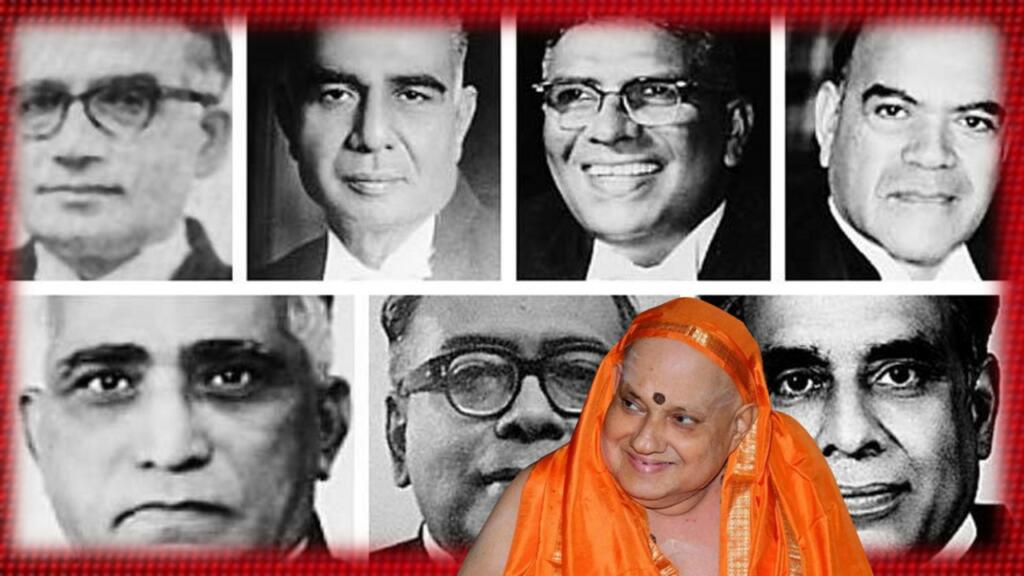The rights and duties bestowed upon the citizens of the nation are an extension of the broad vision of the Preamble. The Supreme Court in the Kesavananda Bharati vs State of Kerala case, by majority, provided protection to the objectives laid down in the preamble as part of the basic structure.
On the contrary, the 42nd Amendment Act of 1976 shattered the notions of the doctrine being infallible. The callous Indira regime downplayed the judiciary and added the terms “socialist” and “secular” to the Preamble, defeating the very mandate of the Basic Structure Doctrine.
Introspection of the majority opinion
In the Kesavananda Bharati vs State of Kerala case, the Special Bench of the Supreme Court, by a majority of 7:6, put an embargo on the amending powers of the Parliament. The judgement provided that the essential features, namely, the supremacy of the Constitution; the objectives of the Preamble; the powers under Article 32 and Article 226; sovereignty; the democratic and republic structures; federalism; unity and integrity of the nation; among others, cannot be taken away by an act of Parliament.
The majority was of the view that the powers of the parliament are not absolute to the extent of the basic structure. However, the doctrinal question of basic structure has been criticised on many fronts.
Also read: The most iconic Indian case ever: 1973, Kesavananda Bharati vs State of Kerala
Credibility of the Basic Structure Doctrine
The majority judgement of the Supreme Court, which established the Basic Structure Doctrine in the legal jurisprudence of India, is often questioned. The issue is slightly more multifaceted, as the majority of the 7 judges who pronounced in favour of the doctrine substantially differed in their individual understandings of the law. That is to say, in the absence of such consensus, and divergent views of Justice Khanna, the merit of the doctrine have been called for introspection on numerous occasions.
Failed doctrine incorporated into Indian Jurisprudence
The Constituent Assembly debates had been silent on bifurcating the spirit of the constitution on the grounds of essentials and non-essentials. Significantly, the only distinction available under the Constitution is recorded under Article 368. That too, the said distinction is restricted to the aspect of a special or simple majority needed for an amendment and its subsequent ratification.
That is to say, it was never the intention of the Constituent Assembly to make any such bifurcation as to the essential and non-essential aspects of the holy book. Further, the concept is alien to our jurisprudence as it imposes unnecessary restrictions on the power of the parliament under Article 368 with respect to constitutional amendment, as highlighted by the Minority judgement in this very case.
Also read: Understanding Indra Sawhney Case: The post-Mandal “reservation criteria has glaring loopholes in it”
Further, it is worth noting that when the doctrine wasn’t discussed during the Constituent Assembly’s deliberations, from where did the term “basic structure” originate?
The doctrine owes its origins to the failed and undemocratic state of Pakistan. The Chief Justice of Pakistan, Alvin Cornelius, first proposed the doctrine in the case of Fazulal Quader Chawdry v. Mohd. Abdul Haque. The doctrine’s inherent flaw had many times doomed the nation’s democratic setup and failed to protect people’s rights.
Also read: The 1995 case that cemented the notion of ‘Hinduism is a way of life’ and why it is not right
Failure of the doctrine in India
The incorporation of the doctrine by the Indian judiciary was followed by the callous Emergency of 1975, and the prominent misconception that is propagated is that the doctrine proved to be the saviour of our democracy.
The myth that Basic Structure philosophy has never let us down can be exposed by the fact that, within two years of the Kesavananda Bharati ruling, Indira Gandhi declared the foreboding emergency. And while Indira Gandhi crushed democracy to dust, the said legal principle was reduced to a helpless paper tiger.
Even worse, the 42nd Constitutional Amendment of 1976 made a mockery of the doctrine as it failed to preserve the essence of the preamble. The Indira Gandhi regime added “secular” and “socialist” in the preamble, thereby changing its very structure, despite the law. On the contrary, the doctrine rendered these later additions impervious to judicial scrutiny, thus making the change sacrosanct for eternity.
Support TFI:
Support us to strengthen the ‘Right’ ideology of cultural nationalism by purchasing the best quality garments from TFI-STORE.COM
Also Watch:
https://www.youtube.com/watch?v=sa6pFw9kpNo
